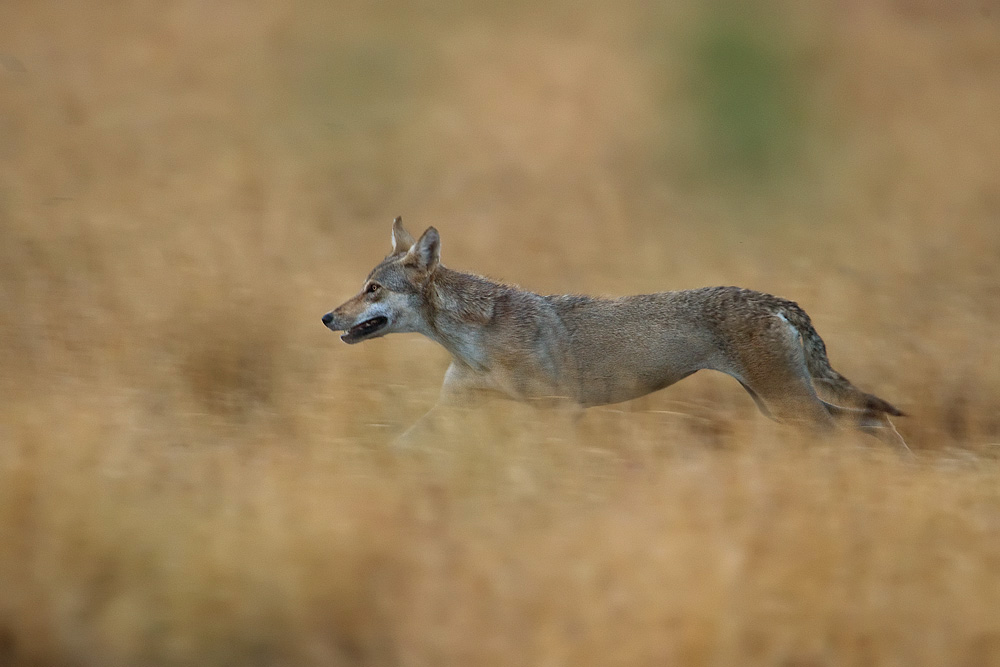India has a wide diversity of carnivores that represent multiple unique ecosystems like forests, grasslands, scrublands, open / barren lands, deserts, ravines and the trans-Himalayan plains. A recent study by researchers from Wildlife Conservation Society–India, University of Florida (USA), Ashoka Trust for Ecology and the Environment, Wildlife Conservation Trust, National Centre for Biological Sciences and James Cook University (Australia) proposes that protecting wild dogs or dholes, jackals, wolves, foxes and hyenas, and their habitats, can offer incredible potential to expand the conservation enterprise in India.
The study, conducted as part of the Wild Canids–India Project, focused on nine species / sub-species of carnivores: dhole, golden jackal, Indian wolf, Tibetan wolf, Indian fox, red fox, desert fox, Tibetan fox and striped hyena, across India. The authors used a combination of methods like citizen-science surveys, information on social media platforms, literature surveys, and governmental and non-governmental open-source databases to map distribution patterns of the carnivores. The study also involved a prioritization analysis, that combined information on the nine carnivores, together with human population densities, poverty levels, budgetary allocations by States for forest / wildlife conservation, and potentially detrimental infrastructure projects.
Dholes currently occupy 49% of their potential habitats in India; golden jackal occupies 73%, Indian wolf 33%, Tibetan wolf 47%, Indian fox 38%, red fox 73%, desert fox 48% and striped hyenas 41%. The results also suggested that (a) the current Protected Area system does not adequately cover or represent India’s diverse habitats, (b) there is immense potential for individual states to increase financial investments towards alternative conservation strategies (like creation of Conservation Reserves, Community Reserves and Village Reserves), and (iii) most mega-infrastructure projects like industrial-scale solar farms, hydropower projects and large mines could be jeopardizing important carnivore habitats.
The authors propose that using wild canids and striped hyenas as flagship species could help conserve fragile, overlooked and undervalued habitats, particularly grasslands, scrublands and open / barren flatlands, which are often (wrongly) tagged as “wastelands”. The study identifies taluks / tehsils across India that are of high priority for conservation– terming them ‘Canid Conservation Units’ or CCUs. If carefully protected, the CCUs could safeguard roughly 24,000 sq. km of grasslands, 99,000 sq. km of scrublands, 124,000 sq. km of open / barren lands or ravines, and 232,000 sq. km of forests, together with the current Protected Area network.
India’s approach to conservation has largely been focused on select charismatic, forest-dependent species like the tiger and the elephant. The authors therefore argue for broadening current management notions of “wilderness” and “natural habitats”, and recommend exploring and implementing alternative conservation approaches beyond forested Protected Areas.
Citation: Srivathsa, A., Majgaonkar, I., Sharma, S., Punjabi, G., Singh, P., Chawla, M., Banerjee, A. (2020). Opportunities for prioritizing and expanding conservation enterprise in India using a guild of carnivores as flagships. Environmental Research Letters. doi: 10.1088/1748-9326/ab7e50


 CI is a non-profit, non-commercial portal that aims to facilitate wildlife and nature conservation by providing reliable information and the tools needed to campaign effectively.
CI is a non-profit, non-commercial portal that aims to facilitate wildlife and nature conservation by providing reliable information and the tools needed to campaign effectively.


